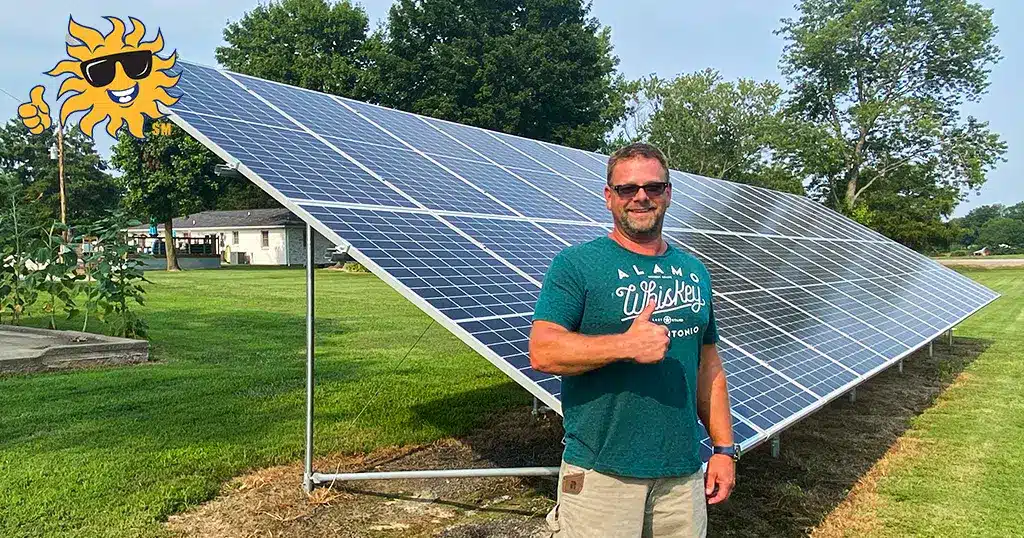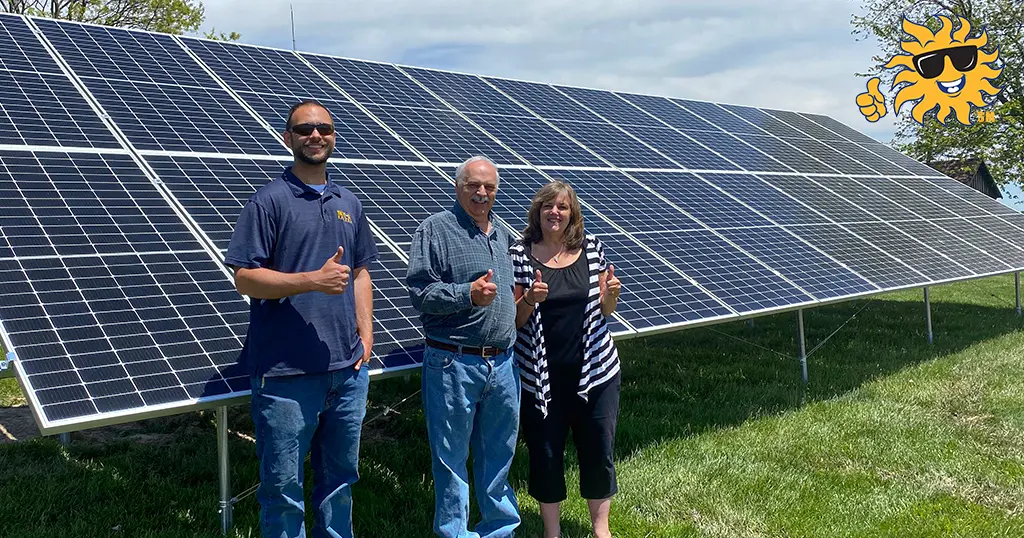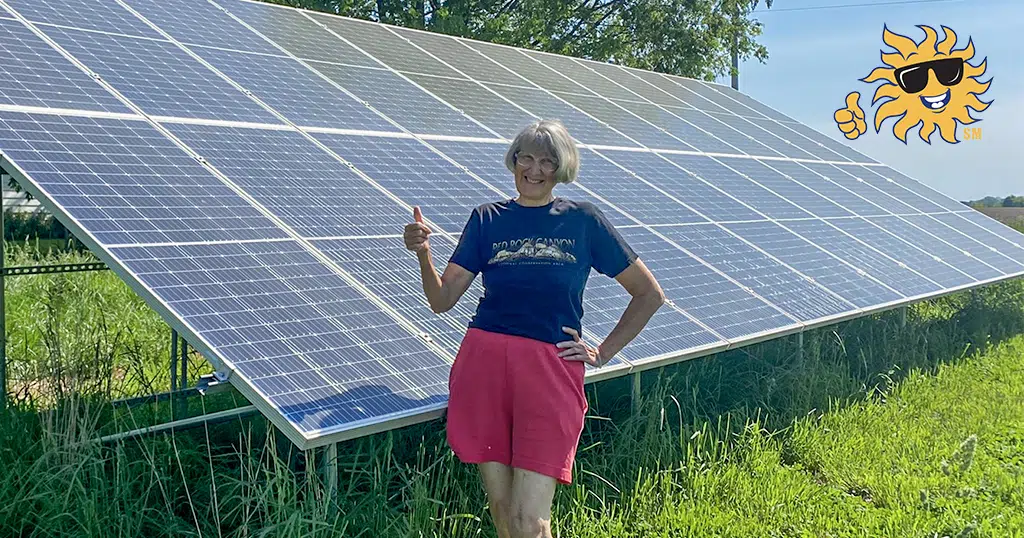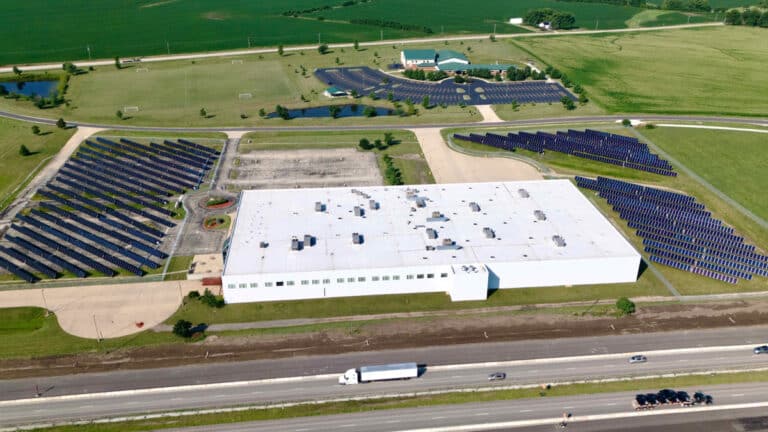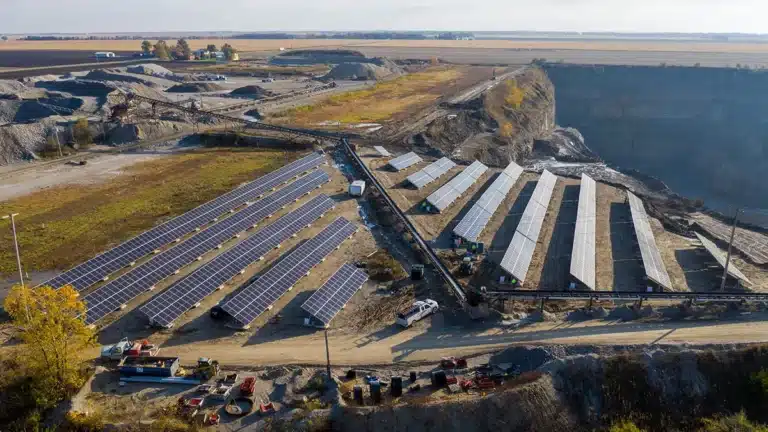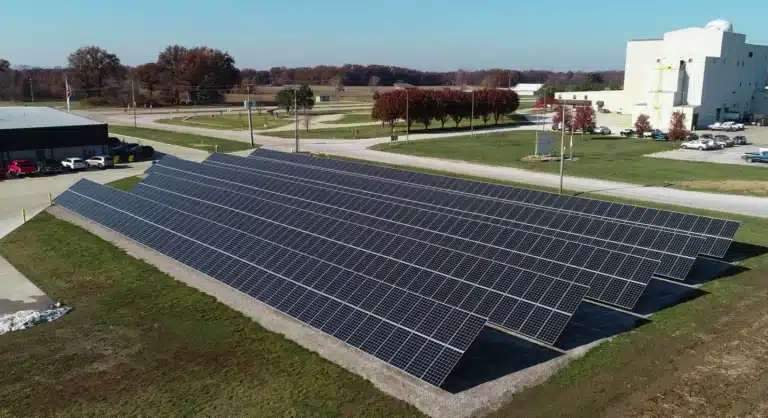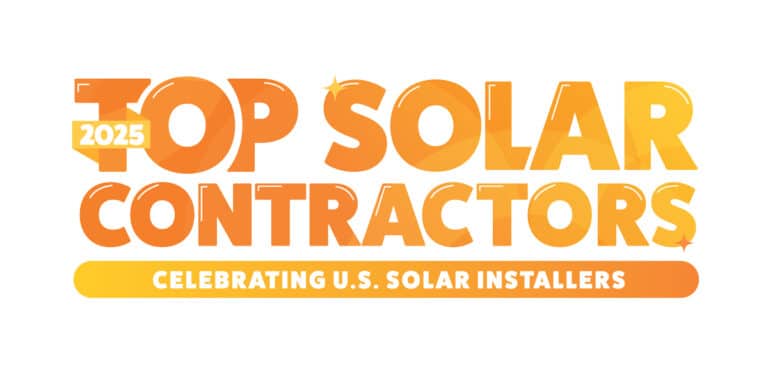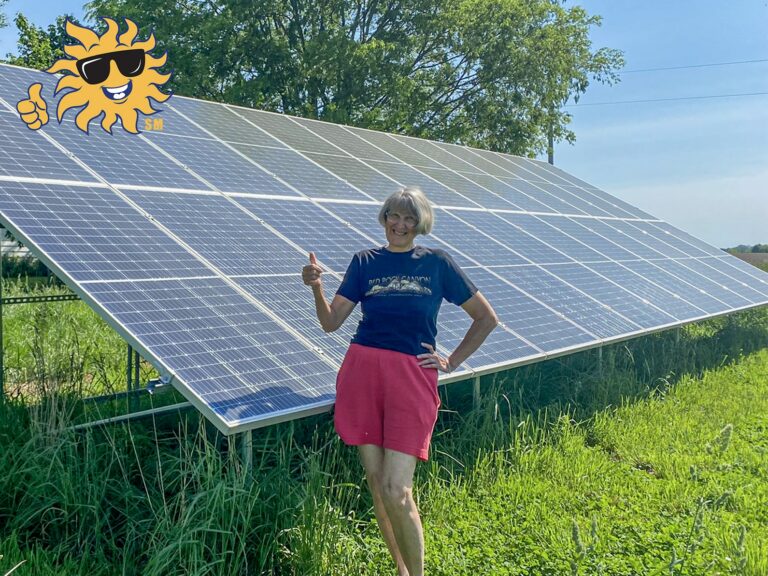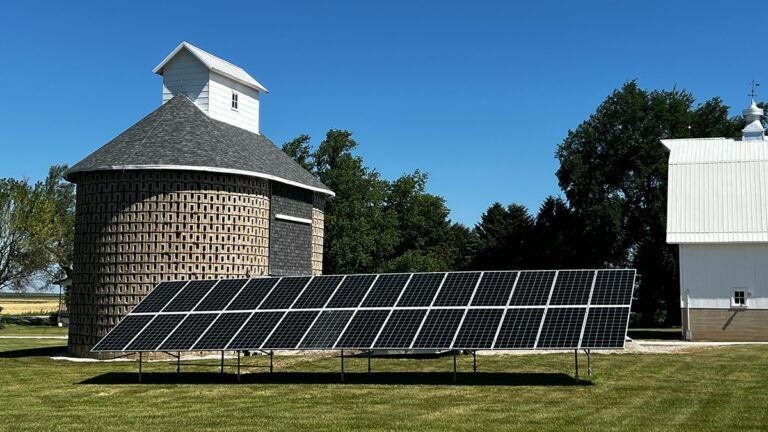Community Solar Installations & Virtual Net Metering
Even if your business doesn’t have the resources to install a solar power system on your property, you can take advantage of community solar installations to reap the benefits of solar energy. Contact our expert team to get started.
What is Community Solar?
There are many creative ways to make your commercial solar installation a reality. See below to explore popular installation options and further information on commercial solar power topics.

What is Community Solar?
Community solar installations—also known as community solar gardens and community solar projects—allow businesses to access the benefits of solar power without installing a system on their own property. Community solar installations involve the placement of a solar array on unused land or property with ideal conditions. In Illinois, these large arrays are up to 2 Megawatts (MW) in size and contain many individual solar panels.
Community solar participants, also commonly called subscribers, contract for a portion of the solar array to supply power for their home, office, school, and more. These portions can be a small fraction of the overall kilowatt-hour (kWh) output of the community solar project or as large as 40% for a single subscriber.
Because the electricity market is deregulated in Illinois, consumers can choose their power from a 3rd party provider to procure power from a community solar plant. Through a process known as virtual net metering, power generated by the community solar plant is metered and credited towards the energy supply portion of the subscribers’ electric bills.
What is Virtual Net Metering?
Virtual net metering allows subscribers to accrue credit for energy production commensurate to their percentage subscription in the community solar project. Community solar credits are issued by the utility company for solar energy produced by the subscriber’s portion of project. Through virtual net metering, energy production is calculated based on the fraction of the array that is included in the subscriber’s contract, and a one-to-one credit is issued on the monthly utility bill:
1. Power Generation
The community solar installation produces solar power at a remote location.
2. Credit Conversion
Solar power production is calculated and converted to virtual net metering credits.
3. Automatic Credit Application
Credits are automatically applied to your monthly utility bill.
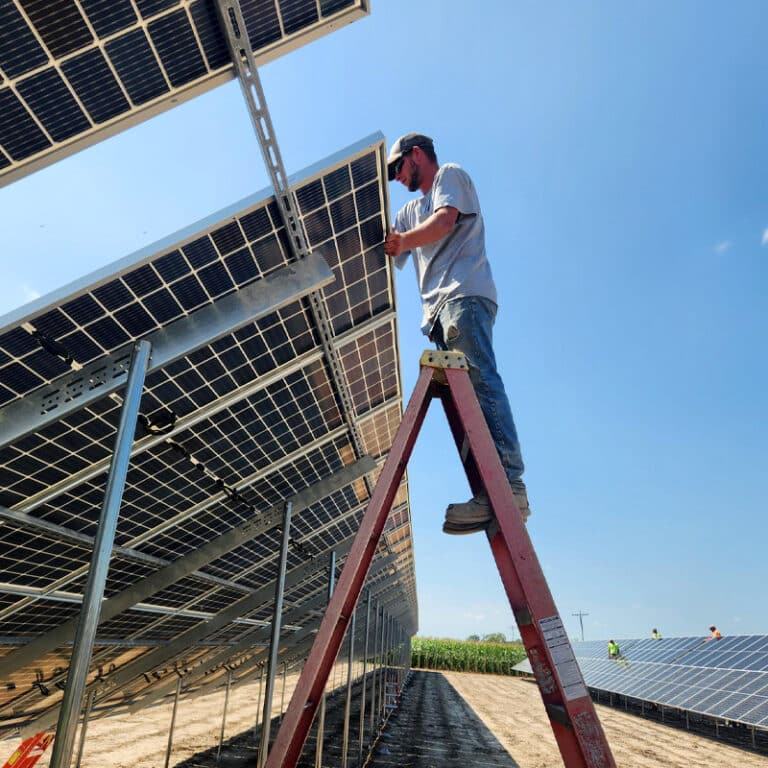
Interested in Adding a Community Solar Installation on Your Property?
Are you a landowner with nearby access to Ameren distribution lines? If so, your property may be a good host site for community solar development. As a landowner, you can receive attractive long-term rent payments by leasing your ground for community solar development. In addition to hosting a community solar project you can potentially subscribe to up to 40% of the project and offset your power needs in lieu of connecting a solar array directly to your home, farm, school, business, or other property type.
Contact us today to discuss community solar feasibility for your site.
Ready to Start?
Request a free quote today
Tick Tock Energy is ready to help you invest in a clean solar energy system on your property, capture lucrative solar incentives, reduce long-term electricity costs, and and enhance the value of your property. To discuss your power needs with one of our solar consultants, request an initial consultation and quote today.
Tick Tock has helped many commercial facilities across Illinois, Indiana and Missouri PRODUCE their own electricity from the sun, REDUCE electricity costs, and MANAGE their energy into the future. Solar helps boost property and stock values and join our growing list of satisfied customers today. Explore recent installations below.
Our Customers Are
Thumbs up for solar
